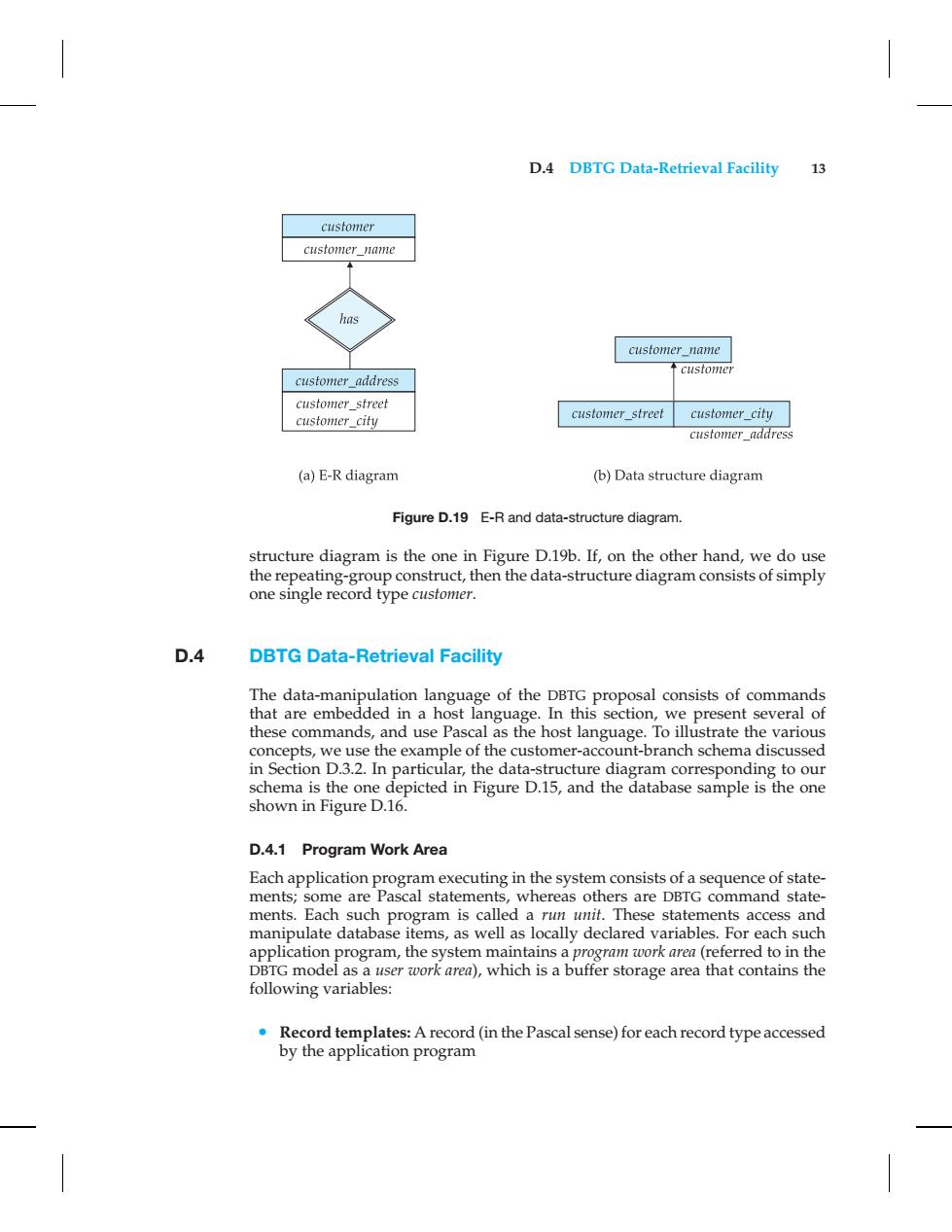正在加载图片...

D.4 DBTG Data-Retrieval Facility 13 customer customer_name has customer name ↑custom1eT customer address customer street customer_city customer street customer_city customer_address (a)E-R diagram (b)Data structure diagram Figure D.19 E-R and data-structure diagram. structure diagram is the one in Figure D.19b.If,on the other hand,we do use the repeating-group construct,then the data-structure diagram consists of simply one single record type customer. D.4 DBTG Data-Retrieval Facility The data-manipulation language of the DBTG proposal consists of commands that are embedded in a host language.In this section,we present several of these commands,and use Pascal as the host language.To illustrate the various concepts,we use the example of the customer-account-branch schema discussed in Section D.3.2.In particular,the data-structure diagram corresponding to our schema is the one depicted in Figure D.15,and the database sample is the one shown in Figure D.16. D.4.1 Program Work Area Each application program executing in the system consists of a sequence of state- ments;some are Pascal statements,whereas others are DBTG command state- ments.Each such program is called a run unit.These statements access and manipulate database items,as well as locally declared variables.For each such application program,the system maintains a program work area(referred to in the DBTG model as a user work area),which is a buffer storage area that contains the following variables: Record templates:A record (in the Pascal sense)for each record type accessed by the application programD.4 DBTG Data-Retrieval Facility 13 Figure D.19 E-R and data-structure diagram. structure diagram is the one in Figure D.19b. If, on the other hand, we do use the repeating-group construct, then the data-structure diagram consists of simply one single record type customer. D.4 DBTG Data-Retrieval Facility The data-manipulation language of the DBTG proposal consists of commands that are embedded in a host language. In this section, we present several of these commands, and use Pascal as the host language. To illustrate the various concepts, we use the example of the customer-account-branch schema discussed in Section D.3.2. In particular, the data-structure diagram corresponding to our schema is the one depicted in Figure D.15, and the database sample is the one shown in Figure D.16. D.4.1 Program Work Area Each application program executing in the system consists of a sequence of statements; some are Pascal statements, whereas others are DBTG command statements. Each such program is called a run unit. These statements access and manipulate database items, as well as locally declared variables. For each such application program, the system maintains a program work area (referred to in the DBTG model as a user work area), which is a buffer storage area that contains the following variables: • Record templates: A record (in the Pascal sense) for each record type accessed by the application program